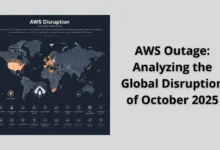Why Asia Is Leading the Next Wave of Technological Innovation

Technological Innovation in Asia is no longer about imitation — it’s about domination. From artificial intelligence to quantum computing, Asian nations are shaping the technologies that define our century.
table of contents
Technological Innovation and the Asian Advantage
The 21st century belongs to Asia. While Western economies grapple with regulation and saturation, Asia has become a global laboratory for technological innovation — agile, fast, and unafraid to take risks.
Nations like China, South Korea, Japan, India, and Singapore are not merely adapting technology; they are reinventing how it’s built, scaled, and commercialized.
The reasons for Asia’s leadership go far beyond cheap labor or population size — they lie in a deep cultural and structural transformation: a collective obsession with innovation as a national mission.
How Asia Turned Innovation into Strategy
Over the last two decades, Asian economies have undergone a technological metamorphosis driven by:
1. State-Led Vision
Governments across Asia recognize technology as the cornerstone of future power. China’s “Made in China 2025,” South Korea’s “Digital New Deal,” and India’s “Digital India” programs are examples of long-term national visions that combine public funding, education, and R&D investment.
2. Massive Talent Ecosystem
Asia produces millions of STEM graduates annually. Universities in India, China, and Singapore feed a tech workforce that fuels global innovation — from Silicon Valley engineers to homegrown startups.
3. Rapid Urbanization and Adoption
The continent’s massive urban centers — Shenzhen, Seoul, Tokyo, Bangalore — act as testbeds for futuristic technologies: smart cities, cashless economies, and AI-powered logistics.
4. Public Trust in Technology
Unlike in many Western countries, where privacy concerns slow down innovation, many Asian societies embrace technology as progress — creating fertile ground for large-scale experimentation in AI, automation, and data analytics.
The Global Shift Toward Digital Currencies: Opportunities and Risks
Asia’s Key Sectors of Technological Leadership
Artificial Intelligence (AI)
China leads in AI patents and deployment, integrating intelligent systems into manufacturing, defense, healthcare, and governance. India’s AI sector, meanwhile, focuses on practical solutions for agriculture, education, and logistics.
Semiconductors
Taiwan and South Korea dominate the global semiconductor supply chain, producing over 70% of advanced chips. Without Asia, the world’s smartphones, EVs, and data centers would grind to a halt.
Quantum Computing and 6G
Japan, China, and South Korea are investing billions in next-gen technologies like quantum computing and 6G networks, competing directly with the U.S. and Europe for technological supremacy.
Fintech and Digital Currencies
Asia is home to world-leading digital payment systems — from China’s Alipay and WeChat Pay to India’s UPI and Singapore’s blockchain-based banking systems. These platforms are redefining how money moves globally.
The Role of Startups in Asia’s Innovation Surge
While government vision drives policy, startups ignite creativity.
Asian startup ecosystems — particularly in India, Indonesia, and Vietnam — are rewriting the rules of entrepreneurship.
They’re lean, fast, and deeply connected to local markets, building solutions for challenges that Western companies often overlook.
Investment is following the momentum:
Asia now attracts over 50% of the world’s venture capital for emerging technologies, signaling a global confidence in its innovation potential.
Why the West Is Losing Its Lead
Western economies are still technological giants, but their innovation machinery is slowing.
Rising operational costs, data restrictions, and political division have created a cautious environment where risk-taking is minimized.
Asia, by contrast, thrives on speed, flexibility, and scalability.
Tech giants like Tencent, Samsung, Huawei, and TSMC move faster than most Western counterparts, while new players such as Grab, ByteDance, and Reliance Jio redefine what innovation means in practice — not theory.
This shift doesn’t mark the decline of the West, but rather the decentralization of innovation — a world where creativity is distributed, not monopolized.
Cultural Forces Behind Asia’s Tech Success
At the heart of Asia’s technological rise lies a unique cultural formula:
- Collective discipline that enables massive-scale projects.
- Respect for education and precision.
- Adaptive entrepreneurship that thrives in uncertain environments.
- Strong community networks that help ideas spread fast.
Innovation in Asia is not just about profit — it’s about national pride, social progress, and collective identity.
Challenges Ahead for Asian Innovation
Despite its rapid ascent, Asia faces several challenges:
- Dependence on Western software frameworks in some sectors.
- Geopolitical tensions affecting semiconductor trade and data security.
- Environmental pressures from high-tech manufacturing.
- Brain drain, as top talent migrates westward for higher salaries.
Yet these challenges are fueling a new kind of resilience — one that pushes Asian nations to build self-reliant, sustainable tech ecosystems.
Conclusion: The Future of Innovation Is Asian
Asia’s rise in Technological Innovation is not a coincidence; it’s the result of decades of vision, discipline, and ambition.
The continent has transformed from a manufacturing hub into the intellectual engine of global technology.
From AI breakthroughs in Beijing to robotics in Tokyo and digital ecosystems in Bangalore, Asia is setting the rhythm of global progress.
In this century, innovation will speak many languages — but its accent will increasingly be Asian.
FAQ
Q1: Why is Asia leading in technological innovation?
Because of strong government vision, massive STEM talent, and public enthusiasm for adopting new technologies.
Q2: Which Asian countries are leading the innovation race?
China, Japan, South Korea, India, and Singapore are the top drivers of advanced technological ecosystems.
Q3: What industries is Asia dominating?
Semiconductors, AI, robotics, fintech, 5G/6G infrastructure, and green energy technologies.
Q4: How does culture influence innovation in Asia?
Cultural discipline, education, and community-driven values create a powerful foundation for large-scale innovation.
Q5: Can Western countries catch up?
They can — but only by adapting Asia’s agile and visionary approach, investing more boldly in emerging technologies.
Discover more from Feenanoor
Subscribe to get the latest posts sent to your email.











